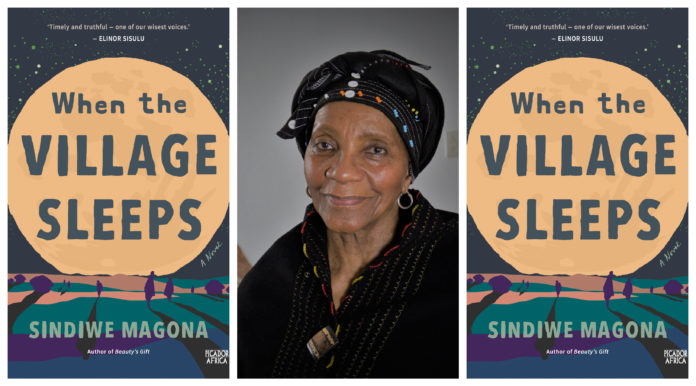Sindiwe Magona is a master storyteller and she shows it once more in her latest book. When The Village Sleeps, her latest release, is a magical realism story rooted in South African society and history. The book is a fantastic read and here are five reasons why you need to read it.
When the Village Sleeps is a visionary novel about what the loss of identity and dignity do to a people afflicted by decades of brokenness. Told through the lives and spirits of four generations of the amaTolo women, including The Old, who speak wisdom with ever-increasing urgency, it moves between the bustling township setting of Kwanele and the different rhythms of rural village life. It recalls the sweeping sagas of the great A.C. Jordan and the Dhlomo brothers and invokes the poetry of S.E.K. Mqhayi, while boldly exploring urgent and contemporary issues. An ode to the complex strengths of South African women, it is also a powerful call to respect the earth that nurtures human life, and to live in self-sufficiency and harmony with the environment and each other.
Sindiwe Magona’s masterful storytelling
Magona has written many different books, plays, poems and biographies. In most of her works, she touches upon themes on memory, history and identity. This book is no different. In When The Village Sleeps, Magona weaves together past and present, reality and fantasy in a beautiful narration. Through her storytelling, Magona depicts the deep wounds apartheid and colonialism left on the land. She also shows how corrupt leadership in the present is further worsening the condition of the people. But what makes her storytelling truly magical is how it is rooted in hope for a better tomorrow.
Her depictions of strong women
Another standout from the book was Magona’s description of strong, black women. The story is told through four generations of a family. There is Khulu, the grandmother, her daughters, Busi, her granddaughter and Mandlakazi, her great-granddaughter. Each of these characters are very different but they each showcase women trying to get by in a world that is not just to them at all. Khulu and Mandlakazi are of course the standout characters but Busi has a special role. Her growth in the book is something beautiful to read.
Her use of the genre of magic realism
Magic realism is a slightly Western conceptual genre of literature that depicts the real world as having an undercurrent of magic or fantasy. While it might not be completely accurate to describe this book with this genre, it does have certain elements of magic realism. There is the presence of The Old who know that which is to come and that which has passed. This is all rooted in real-life while maintaining an otherworldly sense.
The haunting poetry
Through the voice of The Old, through Mandlakazi and then general commentary between the chapters, Magona uses poetry. She uses it as additional commentary on the state of society, ubuntu, corruption and many other pressing issues in South Africa. Above all, she makes the reader aware that it is the future generations who must reshape the country by understanding where they come from. It is the ancestors who are advising the people about the way forward.
Bringing in the pandemic
It’s been less than two years since the pandemic but already there have been many references to it. However, Magona uses it so well to further her main point. The pandemic and the resulting lockdown in South Africa is used to show how the corruption didn’t stop and how inequalities just increased. Magona also ends the book off by showing the impact of the country that has lost ubuntu as people struggled through the pandemic.
In an interview with Pan Macmillan, Magona said: “My writing is my response to this ever-changing world. Therefore, although I may refer to the past, the time of my earlier years or even further back than that, it is always and ever the present that consumes me … and the future it will or may birth.”
RELATED:
Seven moments from the opening night of #TOW2016 that gave us life









